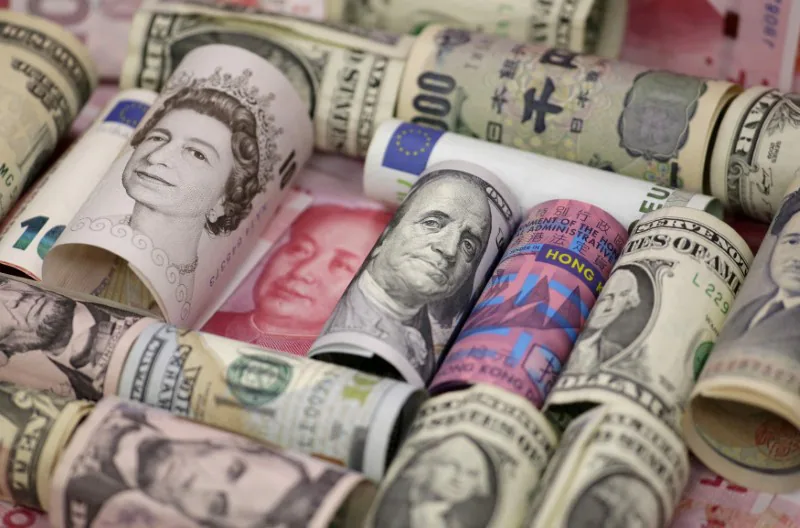- January 28, 2020
- Posted by: Amit Pabari
- Category: Market

The US dollar is scraping the skies to pop up fresh highs as the rise for safe heaven increases after a viral breakout. Going forward, the US Fed prepares to hold their first policy meeting of the year on January 28 and 29, central bankers are sending clear signals that the monetary policy is in an ideal spot. Meanwhile, employers are still hiring, workers are still spending, unemployment is still low and inflation is still tame.
In a nutshell, US growth appears to be cooling back towards a long-term trend of around 2 percent and the recession scare of last year feels far off. So after cutting rates three times in 2019, Fed policymakers have made it clear they will not move again unless things get significantly and unexpectedly worse.
The broad-based USD strength weighed on the EUR-USD pair and dragged it to its lowest level since early December 2019 close to 1.1015 levels. Adding to it, the mixed PMI data from the euro area made it difficult for the EUR to show resilience against the USD. Meanwhile, European Central Bank President Christine Lagarde, noted that they have not yet seen a transmission from wages to inflation. Hence, the Euro will have to wait for a while before taking reversal from its recent lows.
The main checkpoint for the market is the upcoming Fed rate call. Any rebound for the euro may depend on U.S. monetary policy if it sounds more-dovish-than expected. However, the Fed isn’t expected to cut interest rates any time soon and the hurdle remains high for officials to sound outright dovish as the latest data have positively surprised the market, undermining the chances for a euro boost in the short while.
Sterling kept shining after having extended losses last week on the back of a stronger than expected gross mortgage approvals indicating positive momentum in the mortgage market. The week ahead could be vital for the pound as we have two events of high importance, in the form of the latest UK interest rate decision by the plus the Brexit exit date of January 31.
Expectations around these events could see the pound being bought and sold, thereby driving volatility on the GBP. The Brexit date is not so clear cut as a market-moving event, but it is nonetheless symbolic that it represents the UK leaving the EU. The UK will leave the EU from February 1st, and enter the transition phase where all existing rights and obligations remain. The focus will then shift to the trade talks between the UK and the EU, and the UK and the rest of the world, and with it the possibility of new news events to influence the GBP. With no-deal still, a possibility if the UK has not reached agreement on a future relationship with the EU by the end of the year, GBP shall find itself under pressure. Investors keep eyes on Thursday’s BOE and Friday’s Brexit alarm for fresh cues.
Domestically, India’s FX reserves continue to rise higher and higher every week which now stands tall at $462.16 bn. But how long will it continue to increase? Well, looking at the following factors, it seems the inflow pipeline is quite strong.
- The government has invited bids to sell a 100 percent stake in Air India for the second time after a failed attempt in 2018. It has, however, has sweetened the deal this time by offering 100 percent in the airline as well as reducing the debt of the company to about Rs 23,286 crore from Rs 62,000 crore. Also, Asia’s second-largest SBI card IPO is in the pipeline waiting for SEBI’s nod. These two get to bring in foreign inflows to the country.
- Corporates have been steadily raising capital to fund their capex plans and fuel their future growth. In the last few months, there have been quite significant funds raising activities carried on by various corporates. One such shall be done by Reliance Industries which is planning to raise as much as $2 billion via overseas syndicated loans to fund routine capital expenditure in telecommunications and petroleum businesses. This would be among the largest fundraising efforts by an Indian company in fiscal 2020 thereby bringing in more dollars in the country.
- Oil demand has slowed down to 1.8 percent in current fiscal compared to 2.7 percent last year. India’s dollar demand mainly comes from oil and slowdown in the demand should force some intervention from RBI to prevent undue appreciation arising due to strong inflows.
Does this mean a stronger rupee? Well, if RBI continues its buying spree, appreciation shall be limited to 70.50-70.80 levels which shall mostly be reflected by the end of the current financial year.
However, in the near term, Nirmala Sitharaman is widely expected to include stimulus measures for small businesses and non-banking finance companies as a cut in corporate tax rates and rate cuts by the central bank have failed to revive growth. It is certain that without an increase in the budget deficit, the Government cannot meet the expectation of the market from the Union Budget.
The possible increase in the market borrowings of the Government to meet the economic demand shall keep the bond yields at a higher level in the forthcoming financial year. This will moreover increase RBI’s effort to normalize the yields without a rate cut which is threatened by higher inflation. All of this shall keep the rupee under burden for a while and the further course of the pair shall be clearer after the Budget announcement as the markets will react differently to the various measures which shall be announced by the Government.
Amit Pabari is managing director of CR Forex Advisors.
Leave a Reply
You must be logged in to post a comment.




